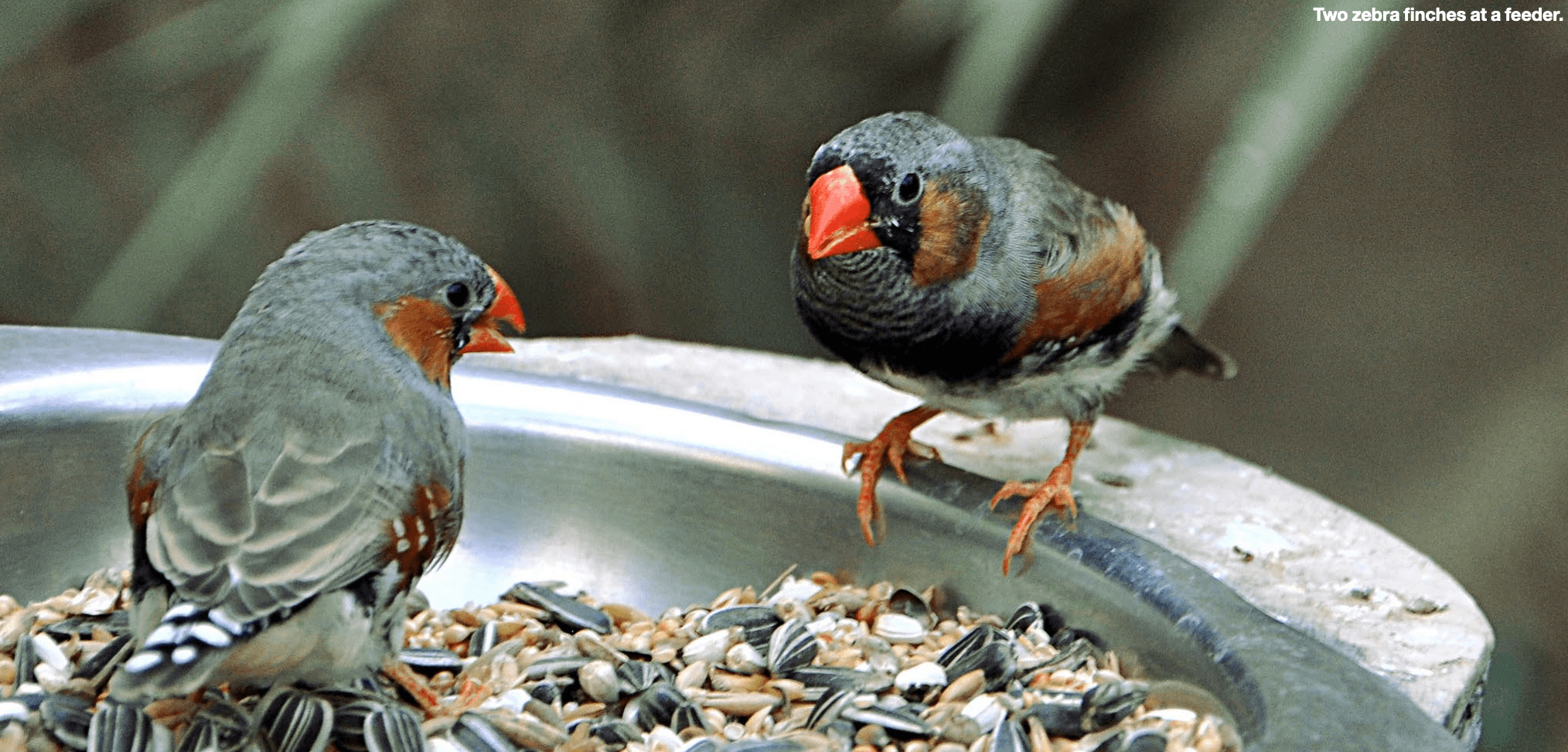Birds in their Little Nests Agree
Rachel Harrison gives an overview of Guillette, Scott and Healy, 2016, “Social learning in nest-building birds: A role for familiarity”.
Classically, nest-building in birds has been considered an innate behaviour. Although this behaviour involves several stages (e.g. material selection, nest-site selection, nest construction), and often results in elaborate structures, it is generally considered that cognition and learning are not involved. Recent research, however, has shown that both nest structure 1 and material choice 2 are affected by individual asocial experience – raising the question of what role social experience may have. Previous work has shown that great tits use social information in selecting a nest site 3 , but it is unknown whether social information might contribute to other aspects of nest-building behaviour.
The authors therefore investigated the impact of social information in choosing nest-building material, using zebra finches that had never built a nest themselves and therefore could be expected to benefit from acquiring social information.

The initial preferences for material colour were first assessed in these inexperienced birds, before exposing them to a demonstrator bird that built a nest using the observer’s least-preferred colour, whilst disregarding the observer’s preferred colour. The demonstrators birds were either familiar birds that the observer had previously been housed with, or unfamiliar birds the observer had never encountered before.
Observers of familiar demonstrators altered their own material preference following this demonstration, whilst birds that observed unfamiliar demonstrators maintained their own initial preference. This indicates that zebra finches are capable of using social information to alter their nest-building material choice, and that they preferentially use social information acquired from familiar conspecifics.
Not only does this study offer fascinating results in its own right, it also proves that nest-building can be an excellent study behaviour for social learning research. The authors create a paradigm similar to a classic two-action task, but in the context of a highly relevant, ecologically valid behaviour that can hold direct fitness implications.
REFERENCES
Guillette, L. M., Scott, A. C., & Healy, S. D. (2016). Social learning in nest-building birds: a role for familiarity. Proceedings of the Royal Society B: Biological Sciences, 283(1827), 20152685.
- Walsh, P. T., Hansell, M., Borello, W. D., & Healy, S. D. (2009). Repeatability of nest morphology in African weaver birds. Biology Letters, 6(2), 149-151.
- Bailey, I. E., Morgan, K. V., Bertin, M., Meddle, S. L., & Healy, S. D. (2014). Physical cognition: birds learn the structural efficacy of nest material. Proceedings of the Royal Society B: Biological Sciences, 281(1784), 20133225.
- Loukola, O. J., Seppänen, J. T., & Forsman, J. T. (2012). Intraspecific social information use in the selection of nest site characteristics. Animal Behaviour, 83(3), 629-633.
About the author
Rachel is the ESLR Journal Secretary. She is currently a postdoctoral researcher at the University of Lausanne, studying social learning biases in children from a comparative perspective.
If you would like to contact Rachel about contributing to Cultured Scene, she can be reached at journalsec2@eslrsociety.org
